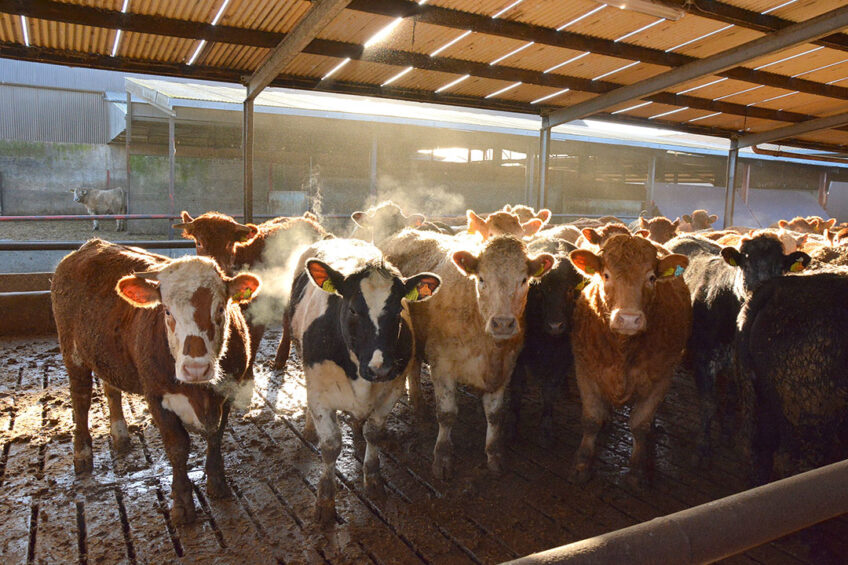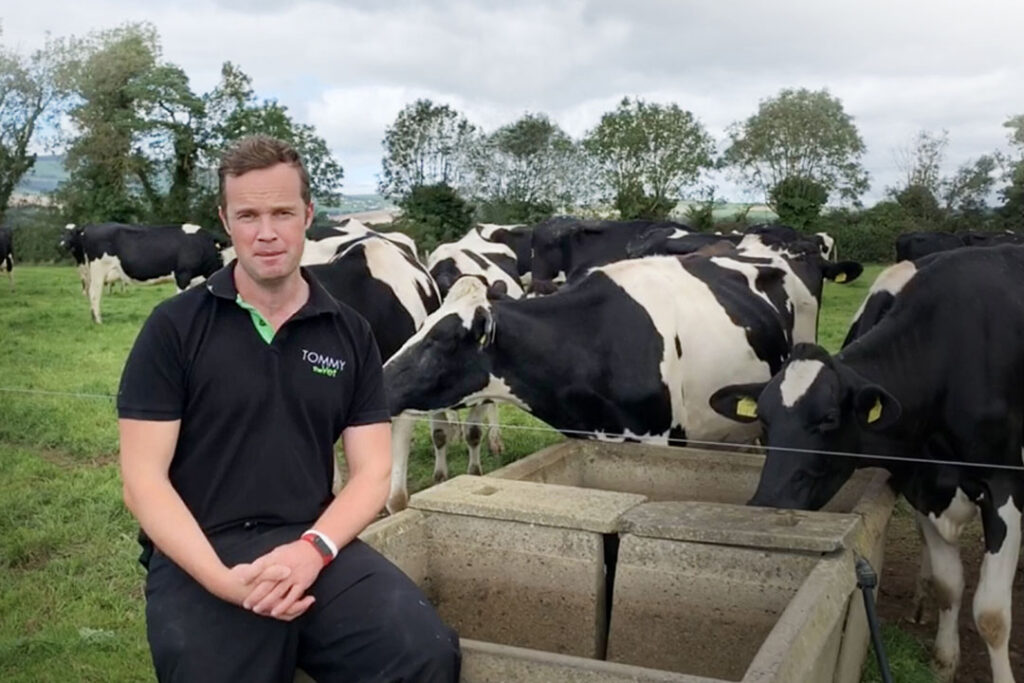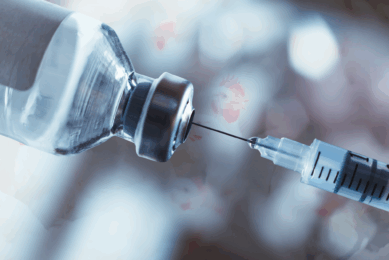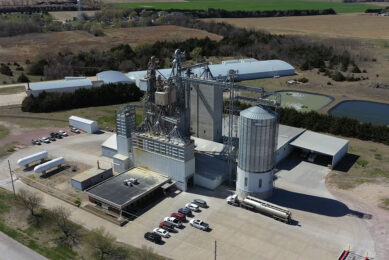Mindset to reduce antibiotic use is slowly changing

Big changes are underway in the livestock sector across the EU in 2022 when the routine use of antibiotics, including preventative group treatments, will be banned. Livestock farmers have already been preparing for this over the past few years, but there is still a lot of work to do to convince some of the more stubborn producers that this is the way forward.
The mental attitude among farmers is gradually accepting that it is no longer viable to use blanket treatments of antibiotics to treat or prevent diseases in their animals. With huge pressure on the agriculture industry from consumers and supermarkets to produce healthy food, free from any antibiotics and with the utmost transparency, farmers have to play their part.
Antibiotic resistance in humans
In the past antibiotics have been used widely to treat livestock but even today, it is estimated that 66% of all antibiotics across the world are used on farm animals and not people.
Bodies such as the European Medicines Agency and the WHO say that an overuse of antibiotics in farming contributes to higher levels of antibiotic resistance in some human infections.
For over 60 years antibiotics have been used on livestock but originally, they were used as growth promoters in cattle throughout Europe. That practice was banned in the EU in 2006 but today over 30 other countries still allow it.
Progress is being made as sales of antibiotics to treat livestock in Europe have been falling. In fact between 2011 and 2018 they fell by over 30% and in the UK sales have fallen by 50% over the past 5 years.

Routine antibiotics not necessary
Advice aimed at livestock farmers to help them reduce their antibiotic use states that animals do not need routine antibiotics to stay healthy. Livestock should not require high levels of antibiotics if they are kept healthy through good husbandry and welfare.
Animals are more susceptible to disease when stressed which releases hormones such as cortisol, which can reduce immunity by compromising the immune system.
Antibiotics have been used more intensely within the pig and poultry sectors but a lot of headway has been made here to reduce this use.
At around 1 month old, piglets receive antibiotics as a preventative measure during the weaning period when stress levels are high and they can develop post-weaning diarrhoea. Poultry producers use antibiotics for the treatment and prevention of respiratory diseases and other bacterial infections.
Lastly, in the dairy sector antibiotics are more commonly used for dry cow therapy to prevent mastitis when the cows are not lactating. In the past this practice has been used on all cows, even if there are no signs of the disease.
Unfortunately, overuse of antibiotics has led to antibiotic resistance, where these life-saving medicines are beginning to no longer work against some of our deadliest pathogens.
Farm study
Northern Ireland dairy farmer Stephen Gibson, 33, runs 100 cows on his Hollowbridge Farm and manufactures his own brand of ice cream. To gain consumer confidence in the food the farm produces, Stephen has steadily reduced the use of antibiotics preferring alternative measures.
Stephen says “we have stopped using antibiotics for routine infections like clinical mastitis after starting to milk record the herd monthly. By examining that data, we can identify cows with rising cell counts during lactation and then target them using a more natural remedy in the form of a bolus from AHV.
“Since adopting this practice of targeting cows we are witnessing less cases of clinical mastitis and only the odd case of environmental mastitis. We are now using zero antibiotics during lactation and this year only 15% of the herd received an antibiotic when being dried off.
“I was very glad to see alternatives to antibiotics coming on the market because cows were needing more tubes to dry them off and sometimes an injection was required on top of that,” says Stephen.
Vets are also coming round to the idea that the blanket use of antibiotics is not sustainable but make the point that some use is necessary when essential.
Targeting failures

Peter Zieger, a vet working with global feed additive manufacturer Diamond V, says “as a vet I see the need to be more and more critical when using antibiotics in livestock as we do have a lot of preventative and animal health supporting measures available.
“The use of vaccines still offers a huge potential. Less than 20% of calves are vaccinated in Germany against respiratory diseases, but still one out of three calves eventually has to be treated in the first year for lung problems.
“Dam`s vaccination for neonatal scour prevention is, however, more frequent at an estimated 50%, but cannot reduce the incidences of 20% scours or 30% navel infections, which has been shown by a huge prevalence study in 765 German farms recently.
“Colostrum management is still a major threat, and bedding in calves is still poor. As a vet I see a huge consultancy issue targeting these failures. As we see more and more, two out of three acute mastitis cases need no antibiotic treatment.
“With drenching cows, we have a powerful adjunct tool to recover cows more rapidly. And not to forget, with nutritional additives like pre, pro or postbiotics we can have a fundamental effect on gut and lung health.
“We at Diamond V see regular reductions of at least one third of antibiotics when feeding our yeast fermentation postbiotics,” concludes Peter.
Antimicrobial resistance
There is a lot of work being carried out to combat the threat of antimicrobial resistance, particularly resistance to antibiotics, by the European Medicines Agency (EMA) and the European medicines regulatory network.
EMA is promoting prudent use of antimicrobials in animals, collecting data on the use of veterinary antimicrobials in the EU, and providing scientific recommendations on the use of specific antimicrobials in animals. The EMA says antimicrobial use in animals can contribute to the emergence of resistant bacteria that can be transferred to humans through the food chain or direct contact. This can reduce the effectiveness of antimicrobials for treating human disease.
It is estimated by 2050, globally, we can expect 10 million deaths annually from multi-resistant bacterial infections. On our farms, this will also have a devastating effect on our livestock and livelihoods.
Recognising good and bad bacteria
Tommy Heffernan, a veterinary consultant with microbiology company Precision Microbes in Ireland, says antibiotic resistance is a human and animal health crisis says, “bacteria have been around since the beginning before the dinosaurs. These micro-organisms are part of every ecosystem on our planet and ourselves. So, while we worry a lot about harmful bacteria, we must also recognise the benefit of many good bacteria in our biome.
“With the discovery of penicillin in 1929 by Alexander Fleming, antibiotics have transformed modern medicine. Although bacteria are simple celled structures, they are innovative and designed to survive.
“Unfortunately, overuse of antibiotics has led to antibiotic resistance, where these life-saving medicines are beginning to no longer work against some of our deadliest pathogens.
“Antibiotic resistance is a human and animal health crisis, often now called a one health crisis. We need to protect these precious resources by using them less and more prudently.
“It is estimated by 2050, globally, we can expect 10 million deaths annually from multi-resistant bacterial infections. On our farms, this will also have a devastating effect on our livestock and livelihoods.
“We need new solutions and ways to reduce usage. We must remember healthy animals are more productive, and the focus must shift to prevention.
“At Precision Microbes we are turning the challenge on its head, recognising the power of beneficial bacteria to compete and promote better animal health. We are working with good bacteria and harnessing the power of nature for a better future,” he concludes.







